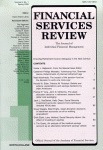Effective teaching and use of the constant growth dividend discount model
DOI:
https://doi.org/10.1016/S1057-0810(00)00046-9Keywords:
Valuation models, Stock valuation, Asset pricing, Dividend discount modelsAbstract
The appropriate application of the constant growth dividend discount model (DDM) requires an understanding of the fundamental nature of the model and its parameters. It is important that students not only be able to mechanically “plug and chug” the formula, but that they also understand the model’s assumptions, inputs, sensitivity to error and practical limitations. This paper demonstrates that the valuation measure derived from using the DDM is very sensitive to the relationship between the required return on investment (K ) and the assumed growth rate (g) in
s
earnings and dividends. Examples show that the valuation error increases at an increasing rate
when the values of K and g converge in the formula. Classroom experience has indicated that students believe and strive to compute a single “correct” valuation of the share price. They should realize that the goal of valuation analysis is to estimate a reasonable range for the intrinsic value of a share price, rather than a single point estimate as often implied by end-of-chapter and exam-type problems using the DDM. © 1999 Elsevier Science Inc. All rights reserved.
Downloads
Published
How to Cite
Issue
Section
License
Copyright (c) 1999 JAI Press Inc.

This work is licensed under a Creative Commons Attribution-NonCommercial 4.0 International License.
Author(s) retain copyright and grant the Journal right of first publication with the work simultaneously licensed under a Creative Commons Attribution-NonCommercial 4.0 International License that allows to share the work with an acknowledgment of the work's authorship and initial publication in this Journal.
This license allows the author to remix, tweak, and build upon the original work non-commercially. The new work(s) must be non-commercial and acknowledge the original work.


